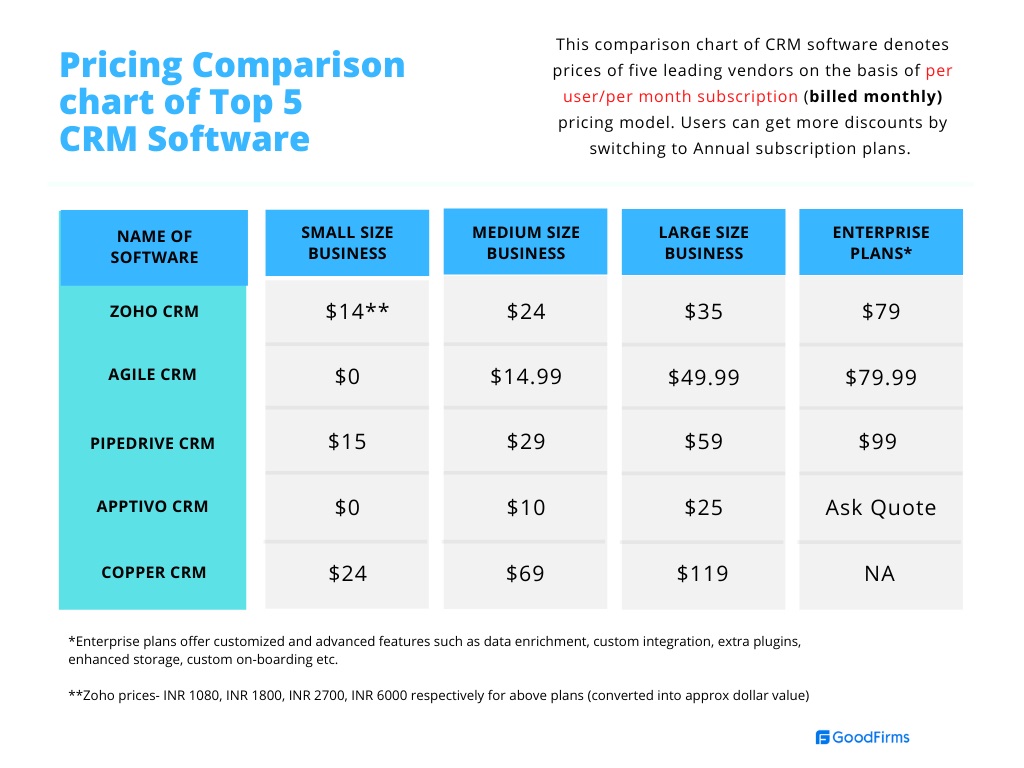Supercharge Your Business: A Deep Dive into CRM, Marketing, and SEO Optimization
In today’s fast-paced digital landscape, businesses are constantly striving to gain a competitive edge. The key to success lies not only in offering a stellar product or service, but also in effectively reaching and engaging your target audience. This is where the powerful synergy of Customer Relationship Management (CRM), marketing, and Search Engine Optimization (SEO) comes into play. This comprehensive guide will delve into how these three critical components can be strategically integrated to drive business growth, enhance customer relationships, and achieve sustainable online success. We’ll explore the intricacies of each element, providing actionable insights and real-world examples to help you optimize your strategies and achieve tangible results.
Understanding the Pillars: CRM, Marketing, and SEO
Before we dive into the specifics of optimization, it’s crucial to establish a solid understanding of each of these fundamental pillars. Think of them as the legs of a table; if one is weak, the whole structure suffers. Let’s break them down:
Customer Relationship Management (CRM)
CRM is more than just a software; it’s a philosophy centered around building and nurturing strong customer relationships. At its core, CRM involves managing all interactions with current and potential customers. This includes collecting, organizing, and analyzing customer data to gain valuable insights into their needs, preferences, and behaviors. A robust CRM system allows businesses to:
- Centralize Customer Data: Consolidate all customer information in one accessible location, providing a 360-degree view of each customer.
- Improve Communication: Facilitate personalized and targeted communication through various channels, such as email, phone, and social media.
- Enhance Sales Efficiency: Automate sales processes, track leads, and manage opportunities more effectively.
- Boost Customer Satisfaction: Provide exceptional customer service and support, leading to increased loyalty and advocacy.
- Make Data-Driven Decisions: Analyze customer data to identify trends, personalize marketing efforts, and make informed business decisions.
Popular CRM platforms include Salesforce, HubSpot CRM, Zoho CRM, and Microsoft Dynamics 365.
Marketing
Marketing is the process of creating, communicating, delivering, and exchanging offerings that have value for customers, clients, partners, and society at large. It encompasses a wide range of activities, including market research, branding, advertising, content creation, and public relations. Effective marketing aims to:
- Increase Brand Awareness: Build recognition and familiarity with your brand among your target audience.
- Generate Leads: Attract potential customers and capture their contact information.
- Drive Sales: Convert leads into paying customers and increase revenue.
- Build Customer Loyalty: Foster long-term relationships with customers and encourage repeat purchases.
- Position Your Brand: Differentiate your business from competitors and establish a unique value proposition.
Marketing strategies can be broadly categorized into inbound and outbound marketing. Inbound marketing focuses on attracting customers through valuable content, while outbound marketing involves actively reaching out to potential customers.
Search Engine Optimization (SEO)
SEO is the practice of optimizing your website and its content to rank higher in search engine results pages (SERPs). It involves a variety of techniques, including keyword research, on-page optimization, off-page optimization, and technical SEO. The ultimate goal of SEO is to:
- Increase Organic Traffic: Drive more qualified traffic to your website from search engines like Google.
- Improve Website Visibility: Make your website more visible to potential customers searching for relevant information.
- Enhance User Experience: Optimize your website for a seamless and engaging user experience.
- Build Brand Credibility: Establish your website as a trusted source of information and expertise.
- Generate Leads and Sales: Convert website visitors into leads and customers.
SEO is a long-term strategy that requires consistent effort and adaptation to stay ahead of the curve. It’s constantly evolving, so staying informed about the latest trends and best practices is essential.
The Power of Integration: CRM, Marketing, and SEO Working Together
The true power of CRM, marketing, and SEO lies in their integration. When these three elements work in harmony, they create a synergistic effect that amplifies their individual impact. Here’s how they complement each other:
CRM Fuels Marketing and SEO
CRM provides valuable data that can be leveraged to inform and optimize marketing and SEO efforts. By analyzing customer data within your CRM, you can gain insights into:
- Target Audience: Understand your ideal customer profiles, their demographics, interests, and behaviors.
- Customer Journey: Map out the customer journey and identify touchpoints where you can engage with them.
- Content Preferences: Determine the types of content that resonate with your audience and drive engagement.
- Keyword Research: Identify the keywords your target audience is using to search for products or services like yours.
- Personalization: Tailor your marketing messages and website content to individual customer preferences.
This data-driven approach allows you to create highly targeted marketing campaigns and optimize your website content to attract the right audience. For example, if your CRM data reveals that a significant portion of your customers are interested in a specific product, you can create blog posts, landing pages, and social media content focused on that product, incorporating relevant keywords to improve your SEO ranking.
Marketing Drives Leads and Feeds CRM
Marketing efforts are crucial for generating leads and bringing them into your CRM system. By implementing effective marketing strategies, you can:
- Attract Qualified Leads: Capture the attention of potential customers who are actively searching for your products or services.
- Nurture Leads: Engage with leads through targeted email campaigns, personalized content, and other marketing activities.
- Qualify Leads: Identify leads who are most likely to convert into paying customers.
- Populate CRM with Data: Capture valuable information about leads, such as their contact details, interests, and interactions.
- Improve Sales Efficiency: Provide the sales team with qualified leads and the information they need to close deals.
For instance, a well-designed landing page with a compelling offer can capture lead information and automatically feed it into your CRM. This allows the sales team to follow up with leads promptly and nurture them through the sales funnel.
SEO Enhances Visibility and Drives Traffic
SEO ensures that your website is visible to potential customers who are searching for relevant keywords. By optimizing your website for search engines, you can:
- Increase Organic Traffic: Attract more visitors to your website from search engines.
- Improve Brand Awareness: Increase your brand’s visibility and recognition.
- Generate Leads and Sales: Convert website visitors into leads and customers.
- Provide Valuable Content: Create informative and engaging content that attracts and retains visitors.
- Support Marketing Efforts: Drive traffic to marketing campaigns and landing pages.
A strong SEO strategy can significantly boost your website’s ranking in SERPs, making it easier for potential customers to find you. This, in turn, drives traffic to your website, increases brand awareness, and generates leads that can be managed and nurtured within your CRM.
Implementing a CRM, Marketing, and SEO Strategy: A Step-by-Step Guide
Implementing an integrated CRM, marketing, and SEO strategy requires a systematic approach. Here’s a step-by-step guide to help you get started:
1. Define Your Goals and Objectives
Before you begin, clearly define your business goals and objectives. What do you want to achieve with your CRM, marketing, and SEO efforts? Are you aiming to increase sales, improve customer satisfaction, or build brand awareness? Having clear goals will help you measure your progress and make informed decisions.
2. Choose the Right Tools
Select CRM, marketing automation, and SEO tools that align with your business needs and budget. Research different platforms and compare their features, pricing, and integrations. Consider factors such as ease of use, scalability, and customer support. Popular options include:
- CRM: Salesforce, HubSpot CRM, Zoho CRM, Microsoft Dynamics 365
- Marketing Automation: HubSpot Marketing, Marketo, Pardot, ActiveCampaign
- SEO: SEMrush, Ahrefs, Moz, Google Search Console
3. Integrate Your Systems
Ensure that your CRM, marketing automation, and SEO tools are integrated to facilitate data sharing and streamline workflows. This integration allows you to:
- Sync Customer Data: Automatically update customer information across all platforms.
- Track Marketing Performance: Monitor the performance of your marketing campaigns within your CRM.
- Personalize Customer Experiences: Tailor your marketing messages and website content based on customer data.
- Automate Workflows: Automate repetitive tasks, such as lead nurturing and email marketing.
4. Conduct Keyword Research
Identify the keywords that your target audience is using to search for your products or services. Use keyword research tools to analyze search volume, competition, and trends. Incorporate these keywords into your website content, meta descriptions, and other on-page elements.
5. Optimize Your Website for SEO
Optimize your website for search engines by:
- On-Page Optimization: Optimize your website’s title tags, meta descriptions, header tags, and content.
- Off-Page Optimization: Build high-quality backlinks from reputable websites.
- Technical SEO: Ensure your website is mobile-friendly, fast-loading, and has a clear site structure.
- Content Creation: Create high-quality, informative, and engaging content that caters to your target audience.
6. Develop a Content Marketing Strategy
Create a content marketing strategy that aligns with your business goals and target audience. This includes:
- Creating a Content Calendar: Plan and schedule your content creation activities.
- Developing a Content Strategy: Identify the types of content that will resonate with your audience (blog posts, infographics, videos, etc.).
- Distributing Your Content: Promote your content across various channels, such as social media, email, and paid advertising.
7. Implement Marketing Automation
Use marketing automation tools to streamline your marketing efforts and improve efficiency. This includes:
- Lead Nurturing: Automate email campaigns to nurture leads through the sales funnel.
- Personalized Marketing: Tailor your marketing messages to individual customer preferences.
- Workflow Automation: Automate repetitive tasks, such as sending follow-up emails and updating customer records.
8. Analyze and Track Your Results
Regularly analyze your CRM, marketing, and SEO data to track your progress and identify areas for improvement. Use analytics tools to monitor key metrics, such as website traffic, lead generation, conversion rates, and customer satisfaction. Make data-driven adjustments to your strategies as needed.
9. Continuously Optimize and Adapt
SEO, marketing, and customer behavior are constantly evolving. Stay informed about the latest trends and best practices, and be prepared to adapt your strategies accordingly. Regularly review your data, identify areas for improvement, and make necessary adjustments to optimize your performance.
Advanced Strategies for Maximizing Results
Once you have the fundamentals in place, you can explore advanced strategies to further enhance your CRM, marketing, and SEO efforts:
Personalization and Segmentation
Personalize your marketing messages and website content based on customer data and segmentation. Use your CRM data to segment your audience into different groups based on their demographics, interests, and behaviors. Tailor your content and offers to each segment to increase engagement and conversion rates.
Behavioral Targeting
Use behavioral targeting to deliver targeted ads and content based on users’ online behavior. Track users’ browsing history, search queries, and interactions with your website to identify their interests and preferences. Then, serve them personalized ads and content that are relevant to their needs.
Retargeting
Implement retargeting campaigns to re-engage website visitors who haven’t converted. Show them targeted ads on other websites or social media platforms to remind them of your products or services and encourage them to return to your website.
Voice Search Optimization
Optimize your website for voice search by focusing on long-tail keywords and conversational language. As voice search becomes more prevalent, it’s crucial to ensure your website is optimized to appear in voice search results.
Mobile Optimization
Ensure your website is mobile-friendly and responsive. With the increasing use of mobile devices, it’s essential to provide a seamless user experience on all devices. Optimize your website’s design, content, and speed for mobile users.
Local SEO
If you have a local business, optimize your website for local search. Claim your Google My Business listing, create local citations, and encourage customer reviews to improve your local SEO ranking.
Social Media Marketing
Use social media to promote your brand, engage with your audience, and drive traffic to your website. Create engaging content, run targeted ads, and participate in relevant conversations to build a strong social media presence.
Data-Driven Decision Making
Leverage data analytics to make informed decisions about your CRM, marketing, and SEO strategies. Track key metrics, analyze your performance, and use the insights to optimize your efforts and improve your results.
Real-World Examples: Success Stories of CRM, Marketing, and SEO Integration
Let’s explore some real-world examples of how businesses have successfully integrated CRM, marketing, and SEO to achieve remarkable results:
Example 1: E-commerce Business
An e-commerce business used its CRM to track customer purchase history, browsing behavior, and preferences. This data was then used to personalize email marketing campaigns, recommending products based on individual customer interests. SEO efforts focused on optimizing product pages with relevant keywords and creating blog content that addressed customer pain points. The result was a significant increase in website traffic, conversion rates, and customer lifetime value.
Example 2: SaaS Company
A SaaS company integrated its CRM with its marketing automation platform to nurture leads through the sales funnel. Targeted email campaigns were sent based on lead behavior and engagement with website content. SEO efforts focused on creating valuable content, such as blog posts and case studies, that addressed industry challenges and showcased the company’s expertise. The integrated approach resulted in a substantial increase in qualified leads, trial sign-ups, and paying customers.
Example 3: Local Service Provider
A local service provider used its CRM to manage customer relationships and track customer feedback. SEO efforts focused on optimizing the company’s website for local search, including claiming its Google My Business listing and encouraging customer reviews. The company also created local content, such as blog posts and articles, that addressed local needs and interests. This integrated strategy resulted in a significant increase in local search visibility, website traffic, and customer inquiries.
Challenges and Solutions
While the benefits of integrating CRM, marketing, and SEO are undeniable, there are also challenges to consider. Here are some common challenges and potential solutions:
Data Integration Issues
Challenge: Integrating data from different platforms can be complex and time-consuming, especially if the platforms are not designed to work together. Data silos can prevent you from getting a complete view of your customers.
Solution: Choose platforms that offer seamless integrations or use a third-party integration platform to connect your systems. Invest in data cleansing and standardization to ensure data accuracy and consistency.
Lack of Expertise
Challenge: Implementing and managing an integrated CRM, marketing, and SEO strategy requires expertise in multiple areas. You may lack the necessary skills or resources within your team.
Solution: Invest in training for your team, hire experienced professionals, or outsource specific tasks to agencies that specialize in CRM, marketing, and SEO.
Measuring ROI
Challenge: Measuring the return on investment (ROI) of integrated efforts can be challenging. It can be difficult to attribute results to specific activities.
Solution: Implement robust tracking and analytics tools to monitor key metrics. Set clear goals and objectives and regularly analyze your data to measure your progress and identify areas for improvement.
Resistance to Change
Challenge: Implementing new processes and technologies can be met with resistance from employees who are accustomed to the old ways of doing things.
Solution: Communicate the benefits of the new approach to your team. Provide training and support to help them adapt to the new processes. Foster a culture of collaboration and continuous improvement.
The Future of CRM, Marketing, and SEO
The digital landscape is constantly evolving, and the future of CRM, marketing, and SEO is likely to be shaped by several key trends:
Artificial Intelligence (AI)
AI will play an increasingly important role in all three areas. AI-powered tools will be used to automate tasks, personalize customer experiences, and optimize marketing campaigns. AI-driven insights will enable businesses to make more informed decisions.
Personalization
Personalization will become even more critical as customers expect tailored experiences. Businesses will need to leverage data to deliver highly personalized content, offers, and interactions.
Voice Search
Voice search will continue to grow in popularity. Businesses will need to optimize their websites and content for voice search to ensure they are visible in voice search results.
Mobile-First Approach
Mobile devices will continue to dominate the way people access the internet. Businesses will need to adopt a mobile-first approach, ensuring their websites and content are optimized for mobile users.
Data Privacy
Data privacy will become an even greater concern. Businesses will need to prioritize data security and transparency, complying with all relevant regulations and protecting customer data.
Conclusion: Embracing the Synergy for Sustainable Growth
Integrating CRM, marketing, and SEO is no longer a luxury; it’s a necessity for businesses that want to thrive in today’s competitive landscape. By leveraging the power of these three interconnected elements, you can build stronger customer relationships, attract more qualified leads, and achieve sustainable online success. Embrace the synergy, implement the strategies, and continuously optimize your efforts to stay ahead of the curve and achieve your business goals.


